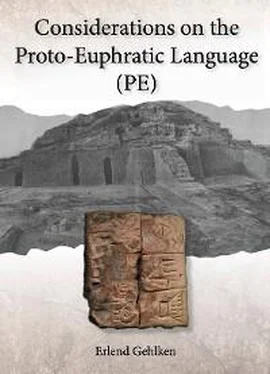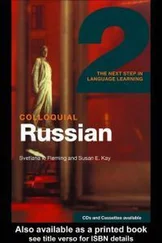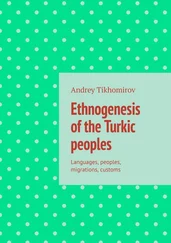None of the cultures mentioned so far can be assigned to a specific people. This only changes towards the end of the Uruk period following the Ubaid period (approximately 4000–3000 BC). There is no clear break between these periods, only visible external changes, which, however, have nothing to do with a “cultural change”: for example, a new type of fine pottery is well attested here (the first red engobe shards of the so-called “Uruk ware” already appear in layer XVIII in the deep sounding [ Tiefschnitt (a5/p57)] in Eanna: Heinrich 1982, 39). According to the Sumerian King List, Eridu in southern Mesopotamia is the city where the first two kings ruled before the Flood. There is a temple in Eridu, from which 18 superimposed layers of an ever-bigger cult house are known; here the later development of the Mesopotamian temples is already anticipated. The oldest layers are from the Ubaid period, the most recent from the Uruk period, during which, however, no further changes were made. The city of Uruk can also be traced back to an Ubaid period settlement. Uruk develops into a metropolis and is (according to current knowledge) around 3000 BC the largest city in the world. In the late 4 thmillennium, an increase in population can generally be observed in the centres in southern Mesopotamia 4.
Detailed information on the issues addressed can be found, for example, in Hrouda 1998, Nissen 1983 or Roaf 1990.
Towards the end of the Uruk period the first script is found in the city of Uruk. In the ED I–II period following the Uruk period, the texts are written in Sumerian. The city of Ur has now become a new centre. Therefore the Sumerians must have been present in southern Mesopotamia at the latest towards the end of the Uruk period; otherwise they could not have adopted or created cuneiform script.
The question of when the Sumerians migrated to (South) Mesopotamia has not yet been conclusively clarified, nor is it certain whether they encountered an already resident indigenous population there. The discussion shall not be reignited at this point, but instead a few observations and opinions shall be presented without evaluation.
The so-called ‘Uruk expansion’, which allows Uruk’s influence to be felt in cities as distant as Habuba Kabira on the Euphrates in Syria, comes to a standstill at the end of the Uruk IV period (Englund 1998, 61). A somewhat mysterious building in Uruk is the socalled “Riemchengebäude” ( Riemchen building 5), whose dating (Uruk V or IV?) and function are not entirely certain. It seems as if cult equipment of an (older?) cult was ritually buried here ( inter alia , cf. RlA s.v. Uruk, column 463f.). In the Uruk III/Jemdet Nasr period 6the large cult houses in Uruk were replaced by less monumental buildings [Heinrich 1982, passim]. The profound changes that took place during this period need not necessarily have anything to do with the immigration of a new people; one might think of comparable innovations in architecture and painting during the transitions from Romanesque to Gothic, from Gothic to Renaissance, etc. Useful ideas are always taken up and spread quickly. A notable observation is presented by Forest: after the decline of the influence of the Uruk culture, older (autochthonous) traditions flared up again in Jemdet Nasr and other regional centres (Forest 2011). Nissen assumes that the Sumerians immigrated after 3500 BC (Nissen 1999, 161); others argue that the Sumerians immigrated before or during the Uruk IV period or even after the Uruk III period (see Englund 1998, 65 with footnote 124).
2. Natural Science Issues
Different peoples or tribes do not need to speak different languages, but may have originally spoken various languages (think of the Red Indians in North America, most of whom now speak English). But if different peoples or ethnic groups speak different languages, that does not mean that they are of different origin (think of the Indo-European languages in Europe). Nevertheless, it would be interesting to use bone finds to investigate whether local differences can be determined in the early population of Mesopotamia by means of aDNA analyses, i.e. whether, for example, in Jemdet Nasr, from which only texts from the Uruk period are known 7, a population that can be separated from the Sumerian or Semitic might have been native. The physician (palaeopathology) and anthropologist Professor Dr Dr Michael Schultz, University of Göttingen, who, among other bone finds, studied the skeletal remains from the queens’ tombs in Nimrud wrote to me to say that by means of aDNA examinations with optimal bone preservation, Assyrians, possibly also Babylonians, could be distinguished from Sumerians with a very high degree of probability 8. Unfortunately, there are currently very few bone finds from this early period in museums and collections, so that an appropriate investigation has had to be postponed to a later date.
3. Corpus of the Archaic Texts
The corpus of the archaic texts includes the texts from the Uruk period (writing phases [Uruk V], Uruk IV and Uruk III) as well as those of the ED I–II period (see Englund 1998, note 123). The history of the excavations and the progress made in the study of the texts have been described in several publications; for the Uruk period reference is made exemplarily to Englund 1994 (introduction) and 1998 (passim). According to Englund, 5820 archaic texts are known (Englund 1998, 65); if the search engine of the CDLI is used, 7432 entries are found for the Uruk period (excluding ED I– II) 9. About 85% of the documents are administrative texts, the remaining 15% are lexical lists (LL), school texts, and similar. Literary texts do not yet exist (the LL a3/TRIBUTE could be an exception 10). Texts are found not only on clay tablets but also, for example, on tags (m1/239), clay cones (a7/21842; possibly ED I), seals (‘City Seal’ [MSVO 2]; UET 2, no. 1 [ED I–II]), jugs (m1/244) and kudurrus (boundary stones) (OIP 104) 11. Texts from writing phase Uruk IV are only attested in Uruk, those from writing phase III mainly in Uruk and Jemdet Nasr, though also in Urum and Larsa. Individual finds are known from Kiš or Ešnunna, for example 12.
Most of the texts from the Uruk period are published in the volumes ATU 1, (2), 3, 5, 6 and 7 [Uruk]; CUSAS 1 [texts from clandestine excavations; presumably documents from Uruk and Jemdet Nasr, possibly from Umma and other places], CUSAS 21 [origin of the texts uncertain; no. 129: Zabalam?] and CUSAS 31 [texts from Umma (?) and further texts of uncertain origin] as well as in MSVO 1 [Jemdet Nasr], 3 [probably all texts originate from Uruk] and 4 [texts mainly from Urum, Larsa, Uruk]. All texts (published and unpublished, including the volume MSVO 3) are accessible online via the CDLI. As already mentioned in the preface, there is disagreement as to the language in which the texts mentioned are written. The tablets of the chronologically subsequent text corpus, the archaic texts from Ur (ED I–II), are definitely written in Sumerian. There is a gap of about 100–200 years between the Uruk texts and the Ur texts, depending on the source used. The Ur texts were published by Burrows in UET 2 (Burrows 1935). Occasional text finds from other cities, including Uruk, also date from this era (see Englund 1998, note 123).
4. PE in (mainly) older publications
The “fight for the recognition of the PE” was preceded by a comparable fight for the recognition of Sumerian (in this case successful). A further three quarters of a century after deciphering the cuneiform script, the Orientalist Joseph Halévy declared that Sumerian was not a natural language, but a kind of cryptograph for rendering Akkadian 13. Even the well-known Orientalist Friedrich Delitzsch, who was after all then to publish a “Sumerian Glossary” and a Sumerian grammar in 1914, initially adopted this view.
Читать дальше












